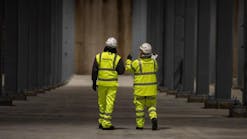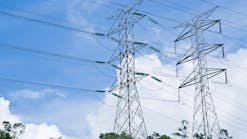There’s a story of a private road in the western North Dakota badlands. The landowner has the ability to say who uses the road, when and under what terms, i.e. pay to access. Accessing this road can save well over 40 miles when traversing the Badlands — if the landowner allows it. The same situation holds true of many rural roads in Wyoming; they cross private land and therefore access is controlled by the landowner, even when those roads lead to public lands. Traveling these roads can be readily done as the roads are engineered and will accommodate most any vehicle. Gaining access to these roads involves a business aspect.
When considering the distributed energy resources (DER) movement, and how utilities should respond to it, there are really two aspects that should be considered separate from one another: the technical (engineering) aspects and the business aspects.
Engineers by virtue of their intrinsic interest in exciting new technology, will likely be quite interested in the DER technology being developed for harnessing renewable energy and converting it to electric power. Integrating that same energy into an electric network grid will create new opportunities for design, ingenuity and success. While some may argue that harnessing renewable power is far from a ‘new adventure’ (albeit there are many remnants of these systems from past generations - Aermotor water windmills, Jacobs Wind Generators, et. al.), the improvements in today’s DER technology surely have engineers excited.
The electric utility that I’m employed by found this excitement well over 30 years ago when they integrated standby diesel engine generators into its electric load management program, far ahead of the DSM technology curve at the time by any measure. With the ability to shed over 50% of our system peak demand in less than 20 minutes during peak load times, the integration of other generation sources into the mix was an eclectic and exciting adventure by any measure from the engineering perspective. Today, our utility has almost 100 MW of member-owned diesel standby generation successfully and safely interconnected to our grid operation. It worked then and still does today — remarkably well!
This program also saved our member-owners hundreds of thousands of dollars, with the return on their investment in the diesel standby systems often being realized in less than three years for most projects, through a time-of-use rate program.
Therein lies the business aspect. Engineering these systems into the electric grid wasn’t contingent on whether or not the system was economical to install or operate. The engineering aspect was based on safety and operability so as to insure that grid integrity and safe operation wasn’t compromised under any circumstances.
Today’s DER movement consistently talks about the economics of the technology, with virtually every program stating the systems are only feasible under certain conditions, which usually include large tax incentives on the financial investment and lucrative energy purchase buy-backs, i.e., net metering. Without those financial fortunes, the industry flails and flounders (i.e., California vs. Nevada). And repeatedly, the movement looks to the electric utility industry to provide some/all of the financial incentives they so need in order to survive, let alone flourish.
The question remains: Is it the responsibility of the electric utility industry to insure the financial feasibility of these systems so as to assure their livelihood? The question to this panel is valid: How should the electric utility industry view the DER movement? The answer probably depends on which aspect is being considered, technical or financial? It really involves both, but with separate consideration to both.
Going back to the road analogy, without access to the grid, the value of these systems diminishes from two aspects: their inability to store excess energy on-site and their inability to transfer excess energy to points elsewhere. This equity argument of toll-free access to the grid, or toll-free use of the grid as a storage battery falls on deaf ears within the movement; it’s simply not their concern as the ‘grid is always there.’ Another argument that’s often used is the consumers have already paid for the grid, thus the utility should not be able to charge for its use by others.
Many state regulators are now coming to realize the Pandora’s box that was opened by allowing the initial entry of net metering by the DER movement. A recent news report cited 24 of 40 states now reconsidering the net metering issue. The DER movements clearly states without net metering (i.e., free energy storage), their efforts are all but in vain. The utilities have made the case that free access, or free storage, is simply not sustainable. The DER movement occasionally states that renewable generation will sustain or improve utility operations, not hamper them, by providing needed capacity that will alleviate the need for costly system upgrades. Thus the interconnection should be welcomed, as in possibly quid-pro-quo fashion, or better yet, paying a retail rate for wholesale energy.DER may well provide many benefits to a utility system as demonstrated by the experiences of my employer. But those benefits need to be quantified and documented so as to be properly reflected into a rate base, which may be based on capacity, energy, or both. The famed phrase ‘time-of-use’ suddenly becomes part of the equation, a term seldom welcomed by many residential consumers or consumer groups, let alone DER operators who often depend on utility resources most during peak utility load times; our system often peaks in early evening when solar is waning or ‘done for the day.’
Utilities deal with the engineering and business aspect of their operations every day, and sometimes they do get entwined when investments and alternatives are considered. Just as the utility must evaluate the business case of their investments, so too should a DER operator using the market pricing and cost to enter the market. Forcing or expecting the electric utility industry to simply accept the DER movement into the grid with enthusiasm and elation, not to mention without any question of the business aspect, is simply dumbfounding by any measure.
The business case of the DER movement can be quantified through simple economics using the results of system engineering and planning. This is the exciting challenge of incorporating the movement into the present-day grid operation, utilizing the resources so as to enhance the grid performance and integrity and determining the value of that integration. It should and must be done in an orderly manner with attention to detail. Forcing integration without consideration for the business and engineering aspect would be foolhardy and jeopardize an engineering marvel that has served our nation arguably quite well throughout history.

